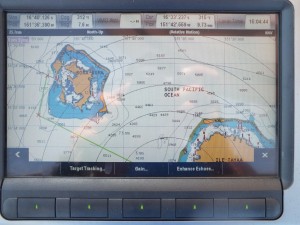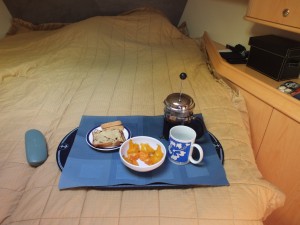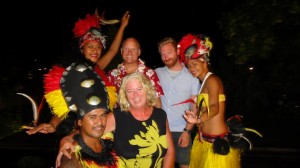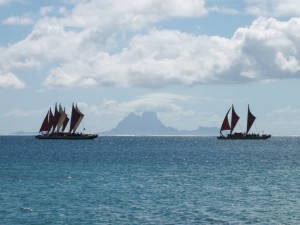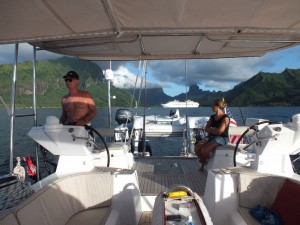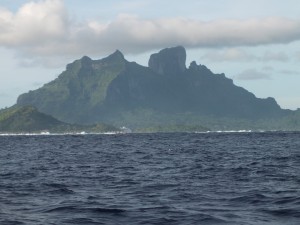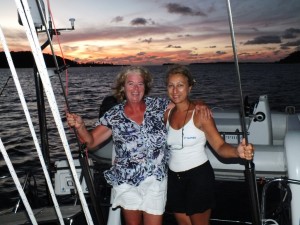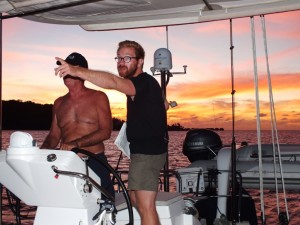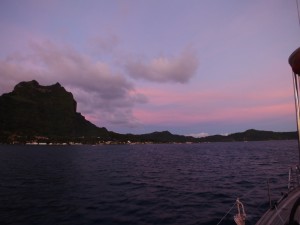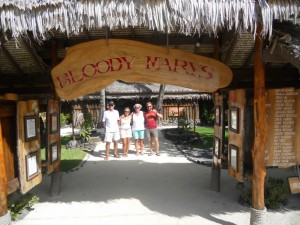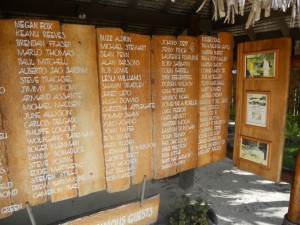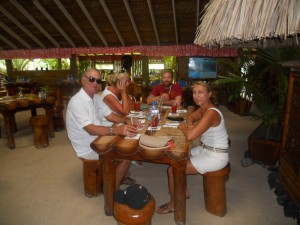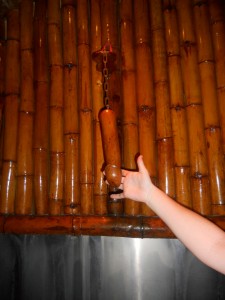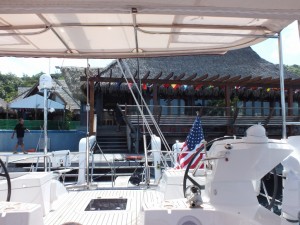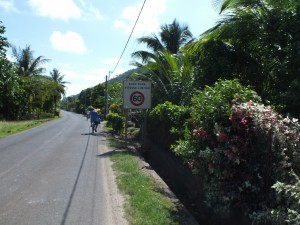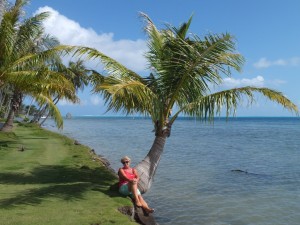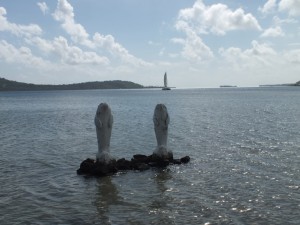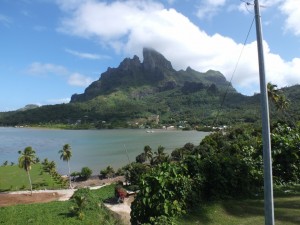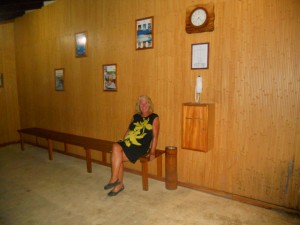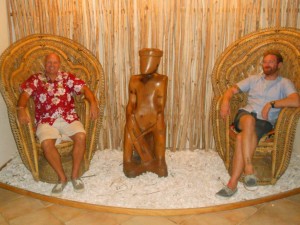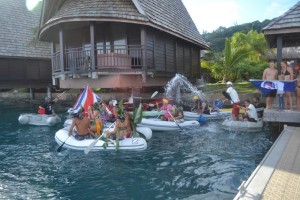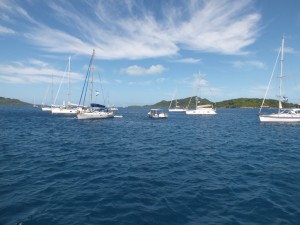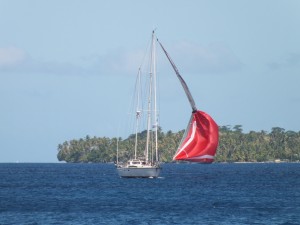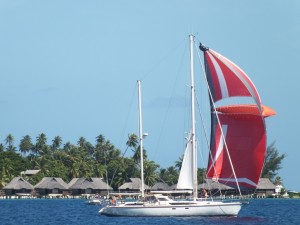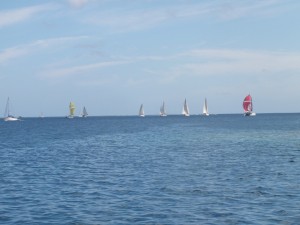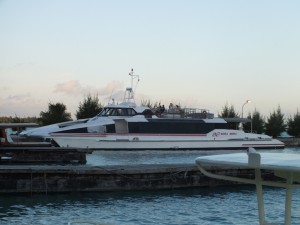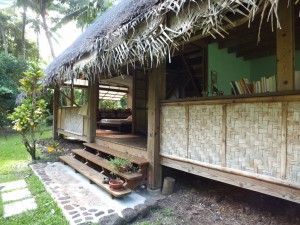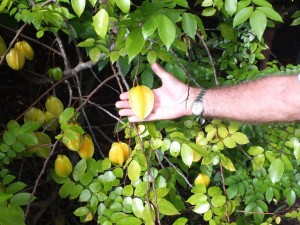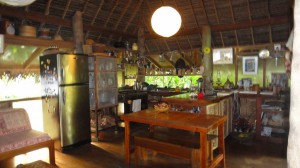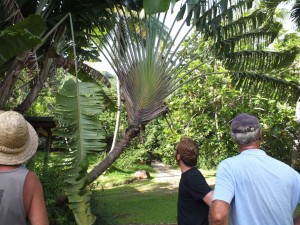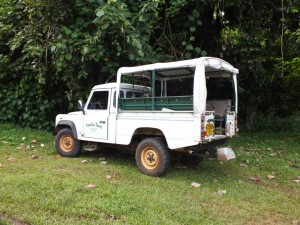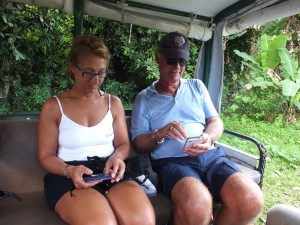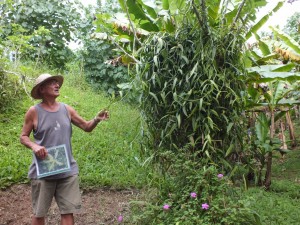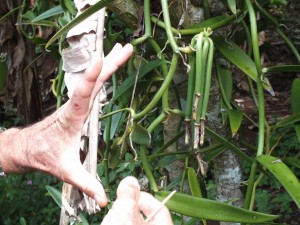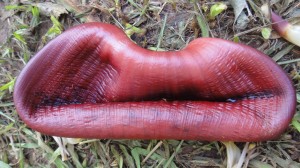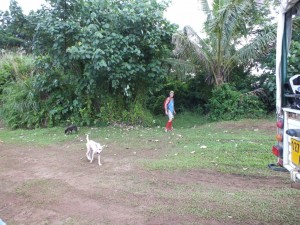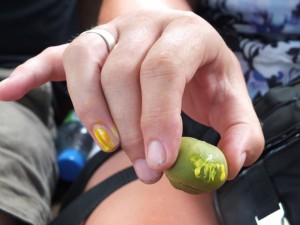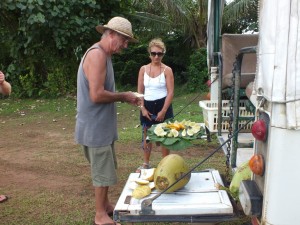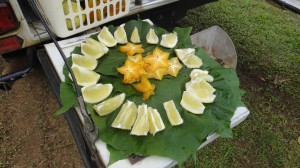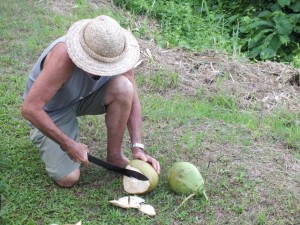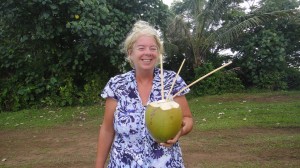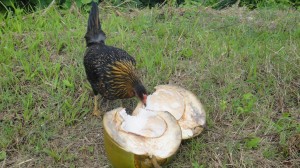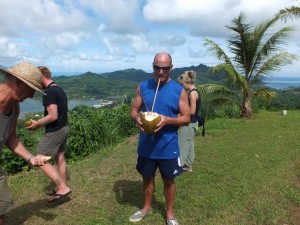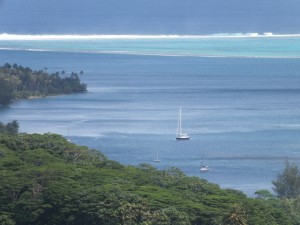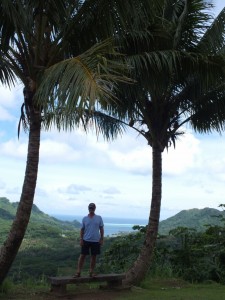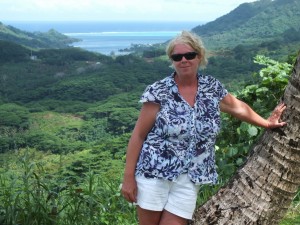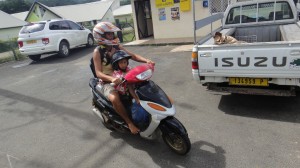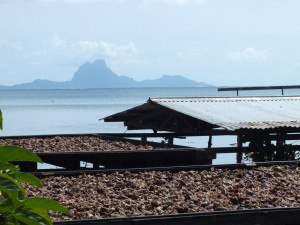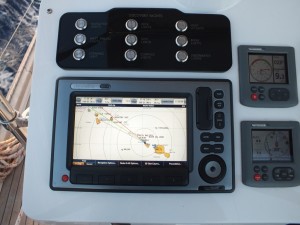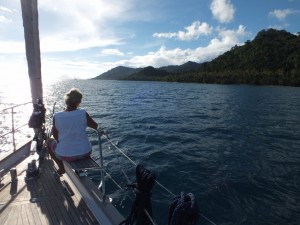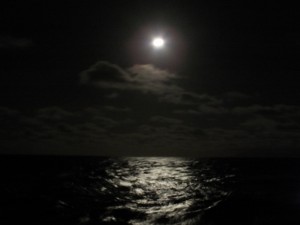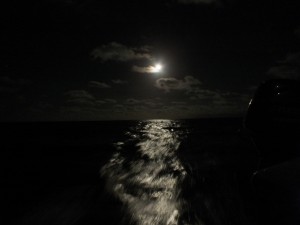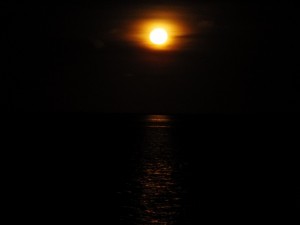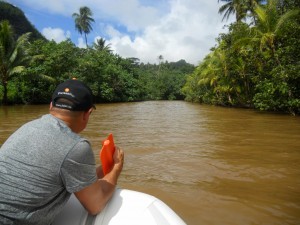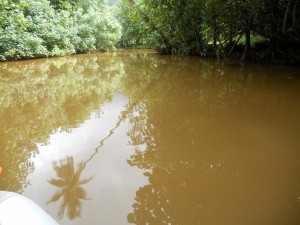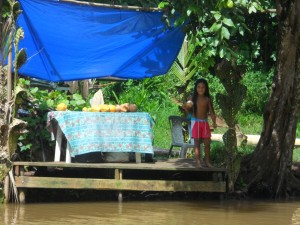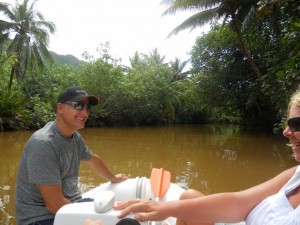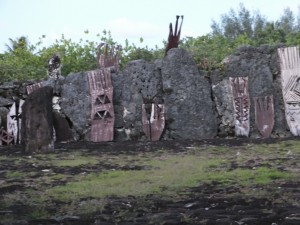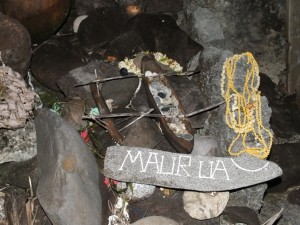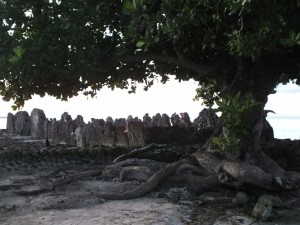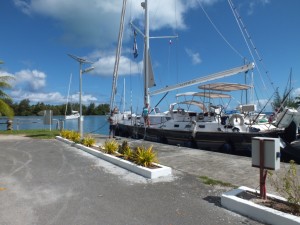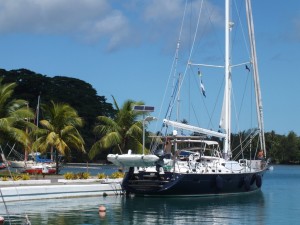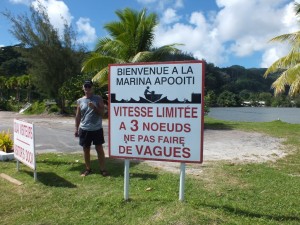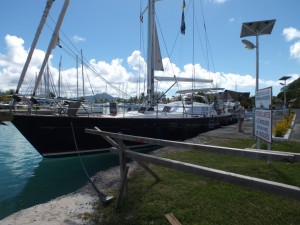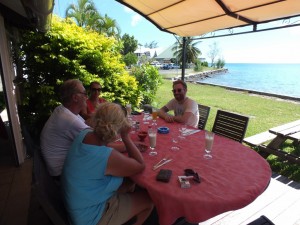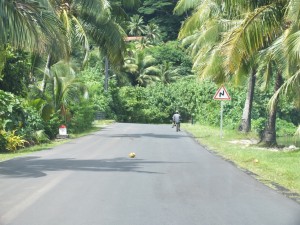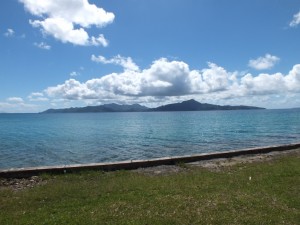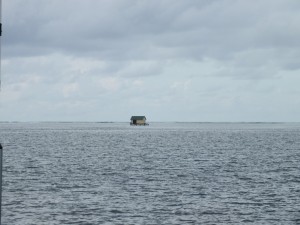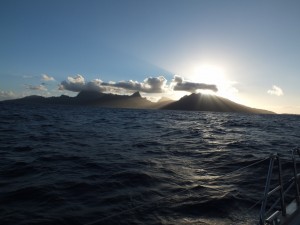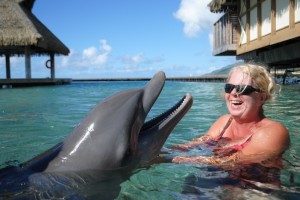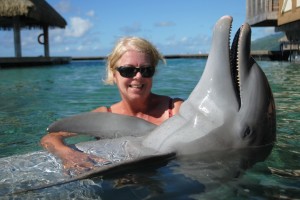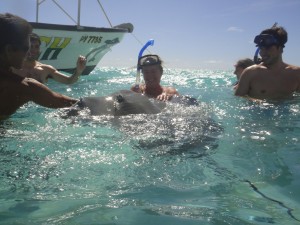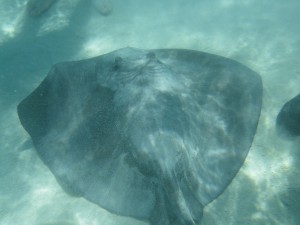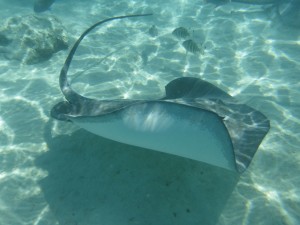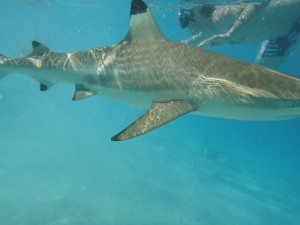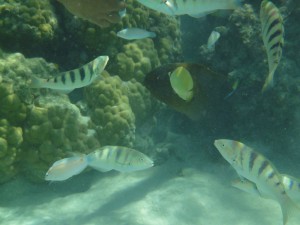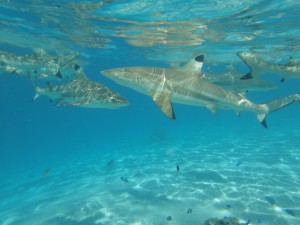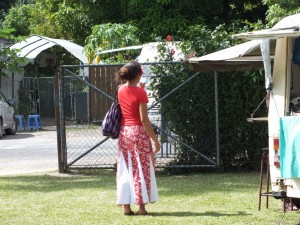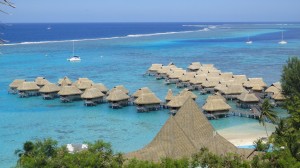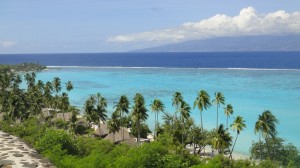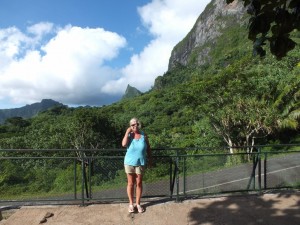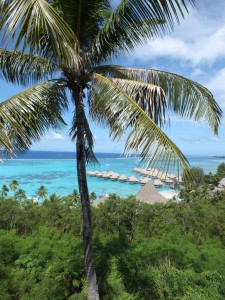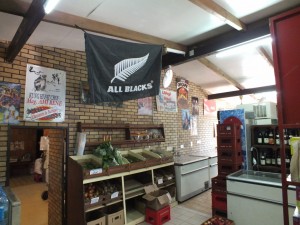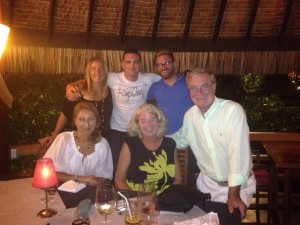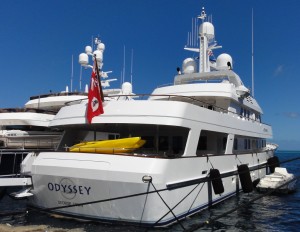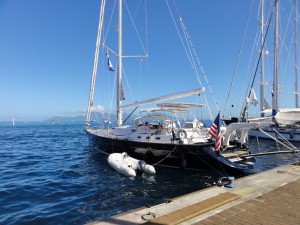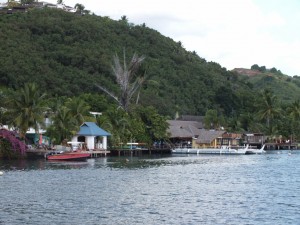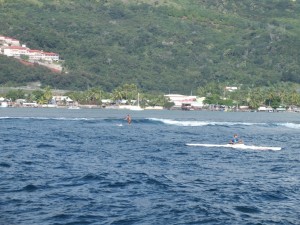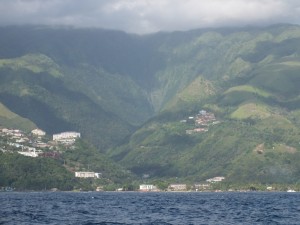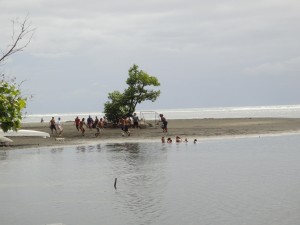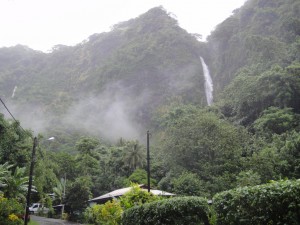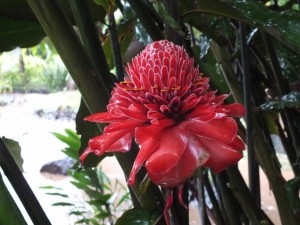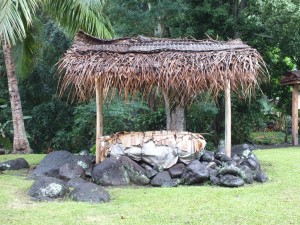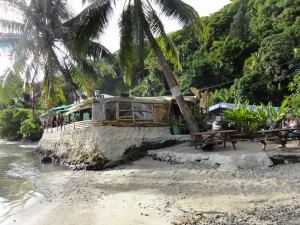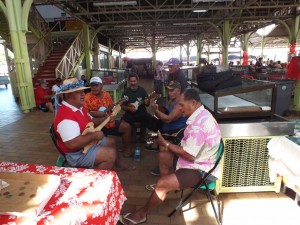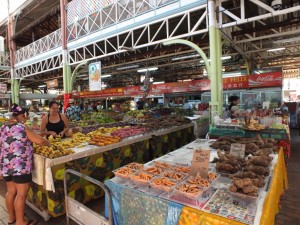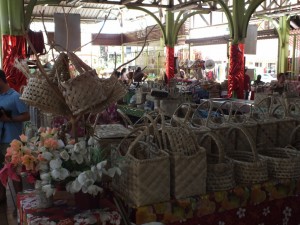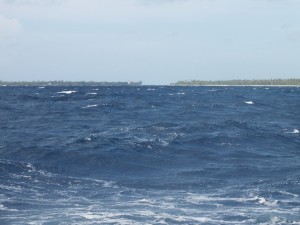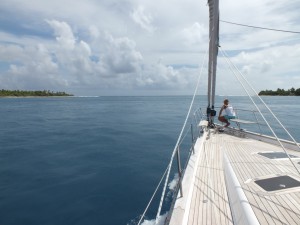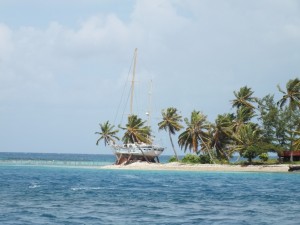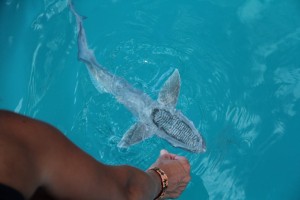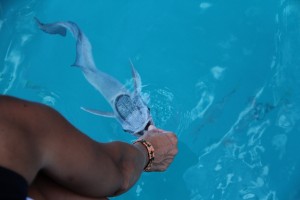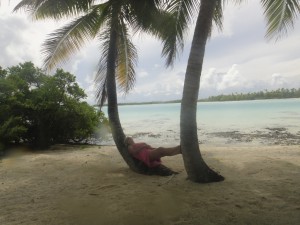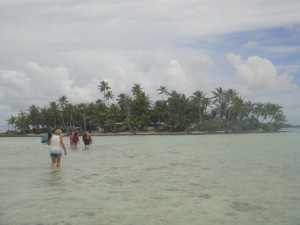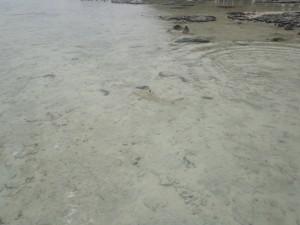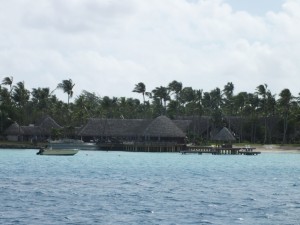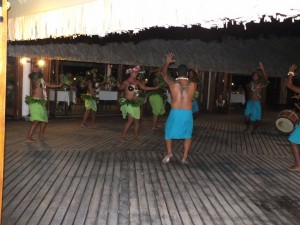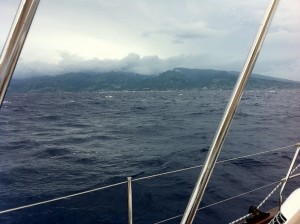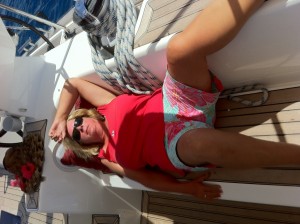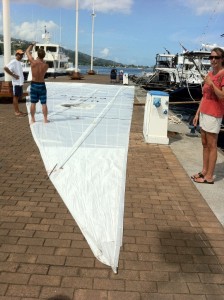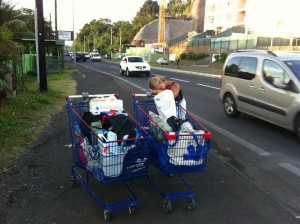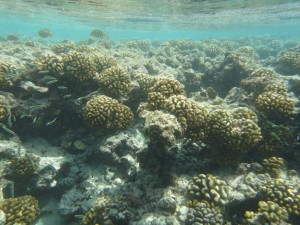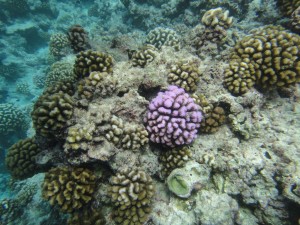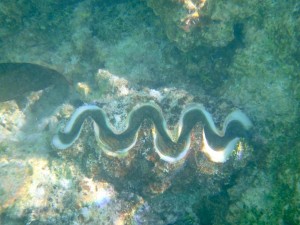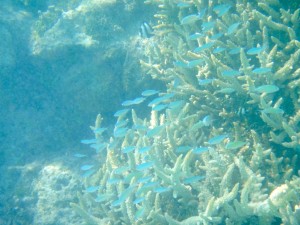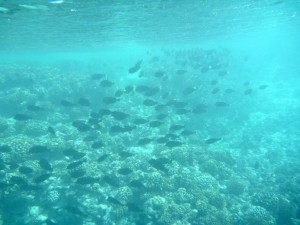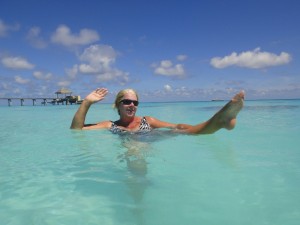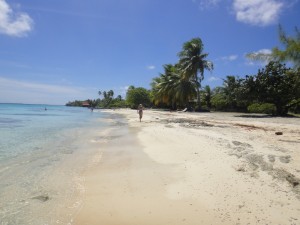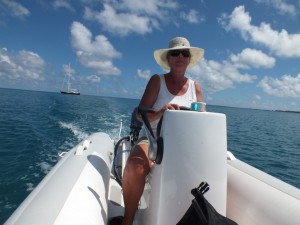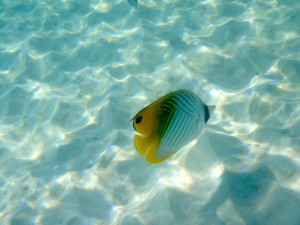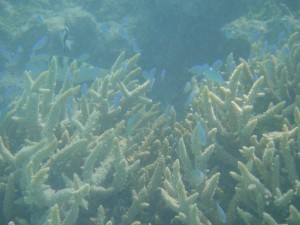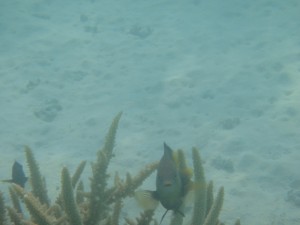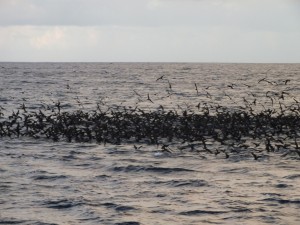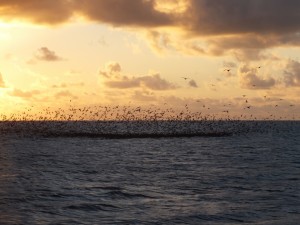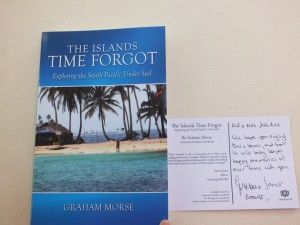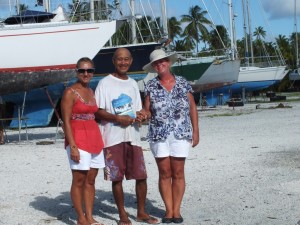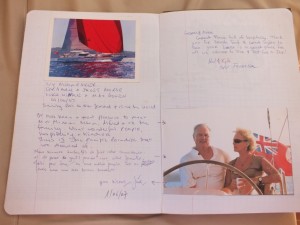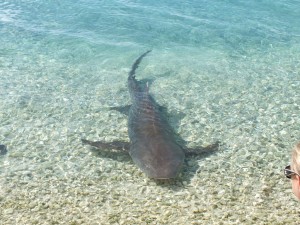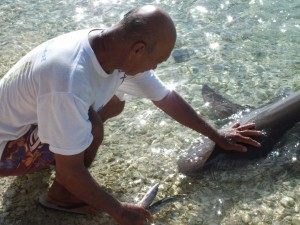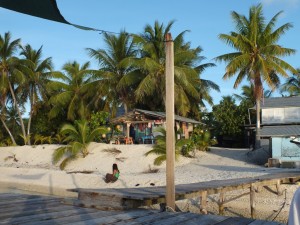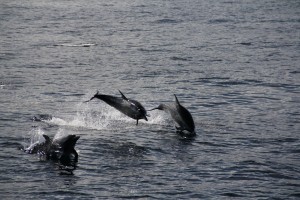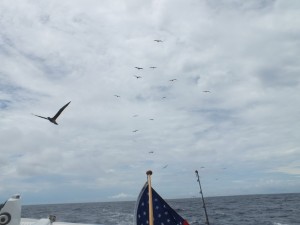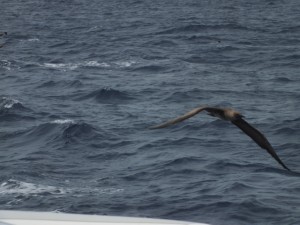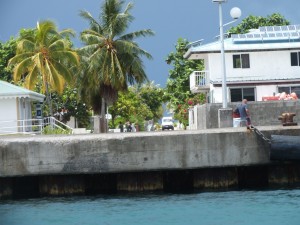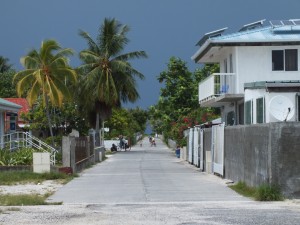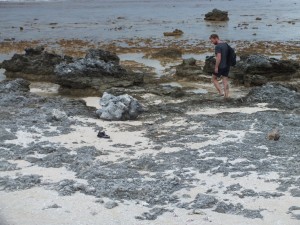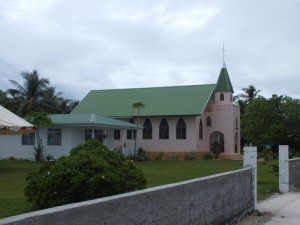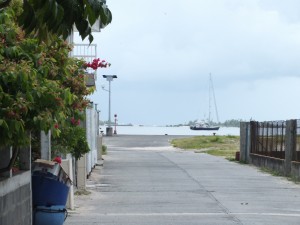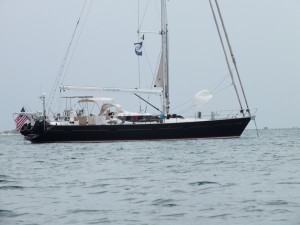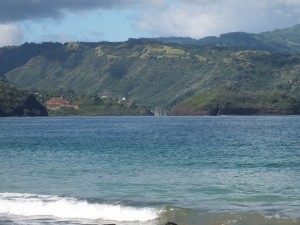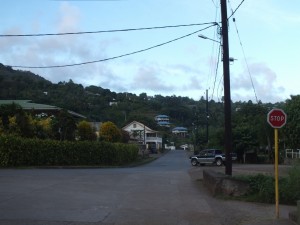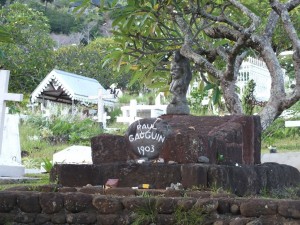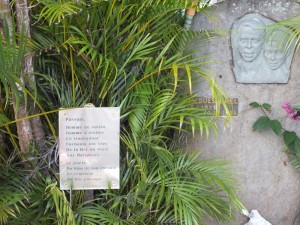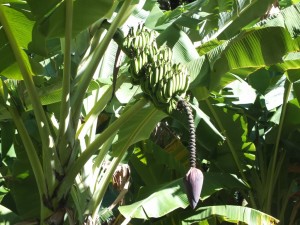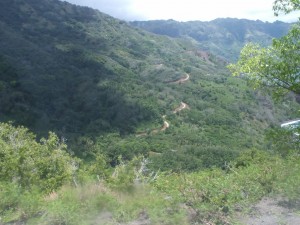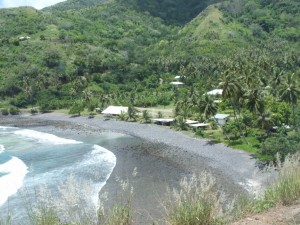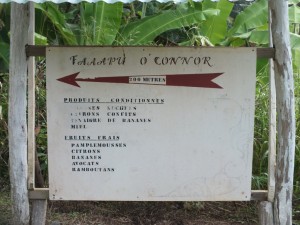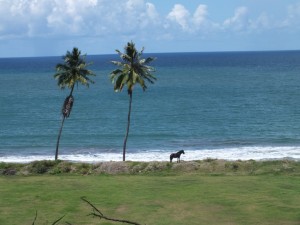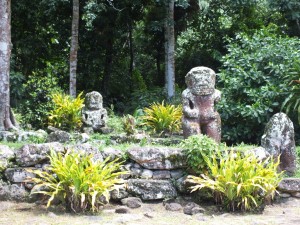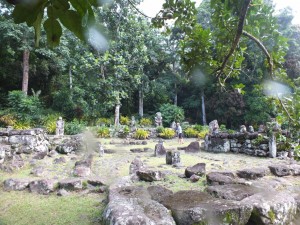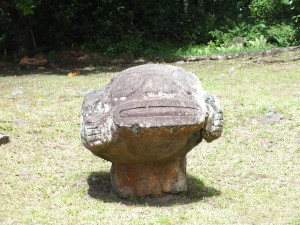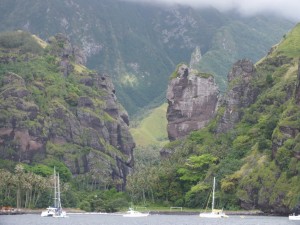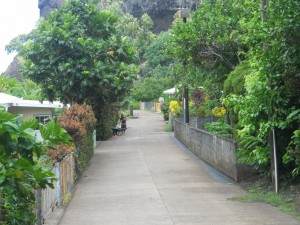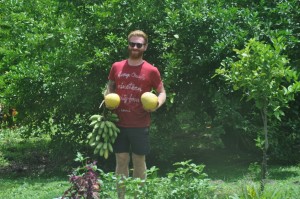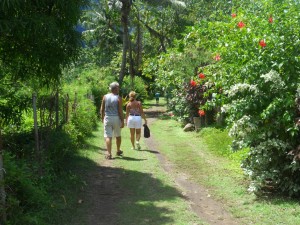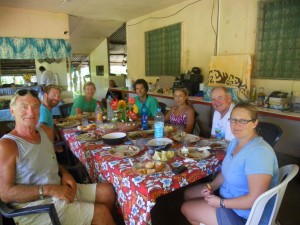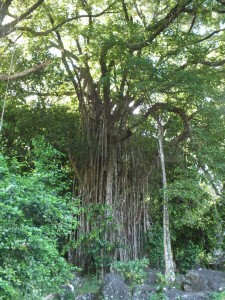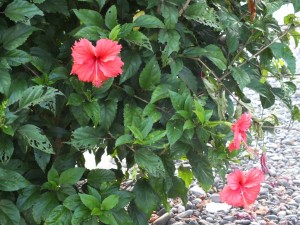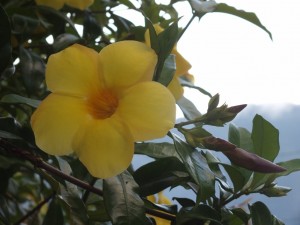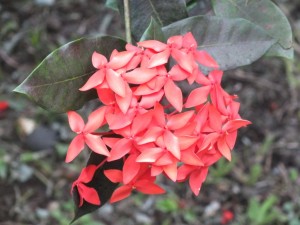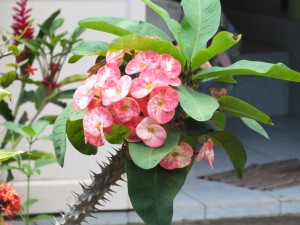On the 4th March we left the Galapagos and started on the long leg across to the Marquesas islands, 3,000 nautical miles away in French Polynesia. I got some very supportive texts from members of my family who have previously undertaken journeys of this length. I think only people who have experienced blue water sailing, as it is known, will appreciate the anticipation I was feeling. Sick in the stomach actually. So thanks to you guys for the support.
I was sad leaving the Galapagos. It certainly was a trip of a lifetime. And given that there are only 150,000 visitors to the islands each year, I feel very privileged to have been one. The Ecuadorian government and the people living on Galapagos are taking the conservation programme there very seriously and signs on it. I hope it lasts.
We made it to the start line in the top 5 again but by the end of the first day we had steamed in to front position and stayed there for the first 6 days. Unfortunately, we soon discovered that the ARC device for tracking our position was not working. I believe for the first few days it looked like we hadn’t left Galapagos. In the end we emailed our position in to the ARC daily. Not an accurate report given that the other boats were on real-time.
I had been told that once we actually got going I would get in to the rhythm of things and time would pass very quickly. And sure enough, after the first 4 days the remaining 12 days were much easier. For this leg the watches were divided between 4 of us – my brother John, his son Gavin, the hired skipper Scott and me. This meant we each had 3 hours on and 9 hours off. I had my 2 favourite shifts of dawn and dusk. 6-9am and 6-9pm. We were blessed with an almost full and full moon for the first week. We were also helped by Venus and Jupiter, low on the horizon and casting bright beams over the water towards us. We were right under the Milky Way and with the nearest ambient light being thousands of miles away had the best view imaginable.
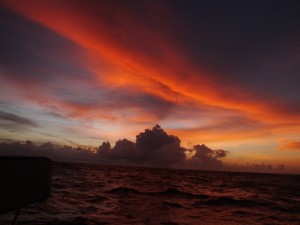
Sunrise in the Pacific

For the first day and night we could see some of the other yachts but by day 3 the fleet was so strung out that we could no longer see them either by eye or by radar. Now we were truly on our own.
We came across a couple of fishing vessels on my dawn watch on day 2. They didn’t show up on either radar or AIS so just as well I was still nervous enough to have my eyes out on stalks. They had nets strung out and we later heard on the radio that 3 of the other yachts got snagged. The smaller of the fishing boats powered over to us looking for cigarettes. This was 500 miles from land. Imagine being stuck out there gumming for a smoke!!
After this encounter, apart from flying fish, we saw no other signs of life for about 10 days. We didn’t even see airplanes. The flying fish are amazing. Their wings are as big as a blackbird’s and they can fly, very gracefully, for about 20 meters. They must have lousy night vision though because at least 15 land on board each night and die. Except one lucky one that landed beside me and I actually heard him flapping. I delegated the rescue to Gavin which he executed perfectly, using kitchen roll. Apparently, they are very slippery. Imagine!! One of the unlucky ones landed on the fly screen of Gavin’s open hatch one night. It flapped about so much that it managed to shake open the fly screen and land on top of him in the bed. That one was not rescued. And as if to get their own back, the next night while on his shift, Gavin was hit in the face by one. I suspect that one didn’t survive either. One other brief sign of life was a blue fin tuna Gavin caught and Scott made into fabulous sushi.
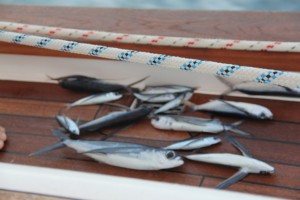
Flying fish (dead) on deck in the morning
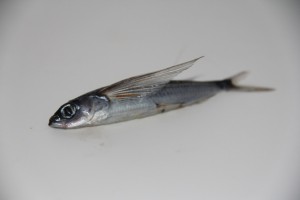
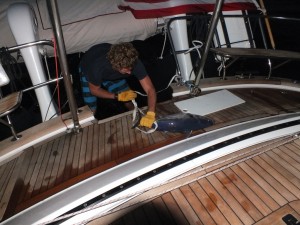
Blue Fin Tuna – before….
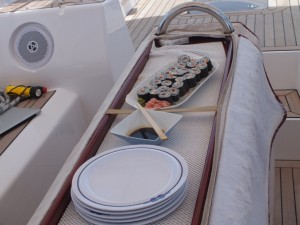 …. and after…
…. and after…
Each boat in the ARC is equipped with an SSB radio. This has a wider range than VHF – up to a couple of hundred miles I think. Each morning at 9.00 all boats radio their position to one coordinating boat. So you get to hear the boats within that range and also track the positions of all. There is another call at 7pm for general chit-chat or to seek assistance/advice from other boats. Both of these calls fell on my shifts and so gave me a social aspect to the day. Gavin and I took turns on the chit-chat call so he could keep up with how the younger crews were doing.
The weather was very mixed. We had good winds the first week, 18-25 kts. But we also had a few days and nights of rain. I was cursing when I first got on board and saw Kevin had left my heavy (for Irish weather) sailing gear on board but was very glad of it on a few occasions. I had brought nothing with long sleeves and certainly no rain gear. We used a variety of sails and became quite adept at taking up and down the Parasailor and MPS sails in breezy conditions. These sails are not on the electric winches and so are hoisted and lowered by hand from the foredeck. Under the Equatorial sun the teak deck is HOT – and we are in bare feet. Brings to mind “The boy stood on the burning deck…..”. Once, I was holding onto the Parasailor (as instructed – I might add) while it was half hoisted. I had visions of being dragged overboard into the water and so sat down on the deck while hanging on. At least this way I might get sliced in half by the guard rail, but would not be left floating in the Pacific hoping someone found me before the sharks got me!! And then, of course, the inevitable wind shift. I was dragged across the deck just as a flying fish came aboard. Sadly, I sliced him in half with my knee. Happily, I lived to tell the tale. Worryingly, I’m not sure anyone noticed my close call.
The night shifts were busy enough. Apart from ensuring we didn’t hit anything and nothing mowed us down, we had to keep the boat from rolling too much and the sails from clattering so that the rest of the crew could get some sleep. My shifts were particularly busy because at dawn and dusk the wind direction and speed shifted wildly and I had to constantly adjust the auto-helm – effectively hand steering. I still managed to nearly kill us all one morning while below doing the ARC radio call. I was keeping an eye on a rain cloud/squall about 10 miles long and some miles off. However, what I didn’t realise was that it was pushing a wind of up to 35 knots on front of it. When it got to about 4 miles off John arrived in the saloon for a shift change. Thank goodness he did because within a minute we were both thrown across the saloon as the wind hit us broadside knocking the boat over. We lashed up on deck and with both of us pulling on the helm together managed to keep the boat from broaching. This is when the boat is so far over the mast and sails are in the water and the boat is on its side. We were within seconds of this happening. Luckily Scott was thrown out of his bunk and came up to see what was happening. He was able to reef the main while John and I hung out of the helm. If I was on my own I don’t know what would have happened. Lesson learned is – if there is a large rain cloud coming, feck the radio and anything else and stay at the helm. The following morning I encountered 3 more squalls but managed them on my own because I was adjusting the boat angle before they hit.
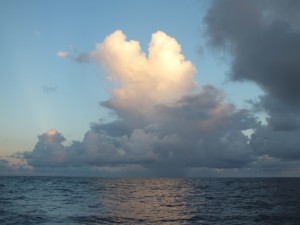
Squall approacing
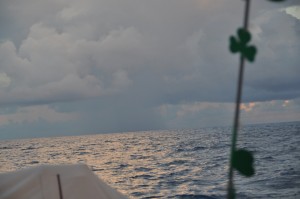
We had a few significant dates during the trip. The first was John’s birthday. While normally a dry boat on passage, we marked the day by having a really nice bottle of red wine with the dinner. Alex’s birthday was the following day. Scott baked a cake. He and I had managed to scrounge some ingredients, such as desiccated coconut, from some of the other boats before we left Galapagos. And of course, St. Patrick’s Day.
There was a lot of confusion on the Arc radio call that morning. Because we fly the US flag (the boat is registered in theUS) not all boats are aware that we are Irish. Also, a young girl on one of the American boats didn’t seem to realise that the English don’t celebrate St. Patrick’s Day!! She asked one particularly narky English captain if he was wearing green and another if they had Guinness on board. Luckily, the Ozzy boat put her straight before things got too out of hand and suggested that Sapphire was probably the only boat in the fleet with Guinness on board (we don’t). She got the hint. When it came to my turn to relay our position I finished up by playing 30 seconds of The Bothy Band’s Rip the Calico, down the radio. (I can hear Aidan groaning from here!!). At the end of the call, when all boats had relayed, we were radioed back and asked to play some more Irish music, which of course we did.
We decorated the boat, had an Irish breakfast, allowed ourselves several beers (no Irish coffee though – had to put that off till the end of this leg), had steak and kidney pie, cabbage and boiled potatoes for dinner. Almost authentic, and certainly not bad for the middle of the ocean. Gavin, having red hair, was designated as our leprechaun. John, Gavin and I had each created a Paddy’s day playlist on our iPods and took turns playing music all day – except during sail drop and hoist!! We finished off the evening by watching a DVD of the Late Late Show tribute to The Dubliners.
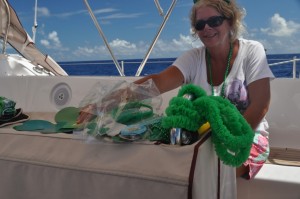
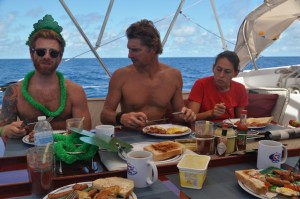
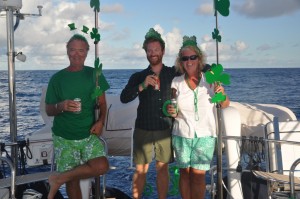
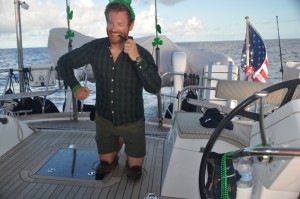
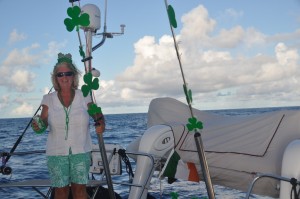
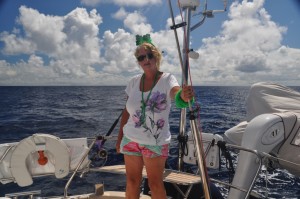
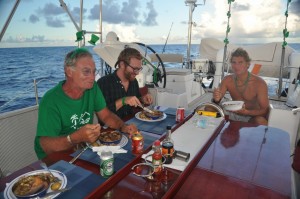
Apart from all the sailing stuff on a leg like this there is also the ordinary day-to-day living. As you all know I am not a very girlie person, but I do go to the hairdressers every 4 to 6 weeks and to the beauty salon at least every 2 weeks. So some of you I’m sure will understand my predicament after 10 weeks living on a boat. The hair – well forget it. It’s unruly at the best of times but now it has grown about 2 inches in this hot weather so the roots are well out. The older readers among you will remember an actor called Milo O’Shea. His eyebrows were thicker than most men’s moustaches. The O’Connor family eyebrows, if left unchecked, would give Milo a run for his money. And here is my problem. I can’t see my eyebrows well enough to pluck them unless I have my glasses on. If I have them on I can’t get at my eyebrows!! The rest of the grooming issues I don’t need to go into. Just to say, if you are going to spend months at sea, you have to be prepared to leave your vanity behind.
We have 3 showers on board (4 if you count the outdoor one at the back of the boat). All with hot water which is made on board each day by desalinating sea water. The tricky bit is showering when the boat is randomly lurching from one side to the other. There is a seat in my shower but until I am old and disabled I can’t bring myself to use it. So, I am now quite an expert at wobbly showering. The last time the boat was attached to dry land, and therefore not rocking, was 5th Feb. Since then we have been at sea or at anchor.
Because of the shift system, the only time everyone is together at the same time, is during the evening meal. This means that people are not in each other’s faces all the time. It also gives you a lot personal time for reading, playing music etc. Great. And my favourite thing about being at sea at the moment is the absence of mosquitoes. I was well and truly savaged the last night we were in Galapagos because I had run out of deet. It was a concern since we were going to be 3 weeks at sea and well out of helicopter reach. Anyway, no malaria or dengue fever – yet!!
By day 14 of the leg we were within 300 miles of land. All of a sudden we started to see some wildlife. A variety of sea birds and a large group of dolphin who played in the bow wave for about 20 minutes.
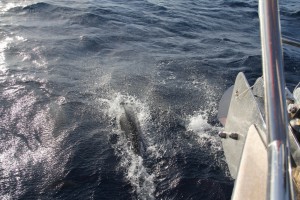
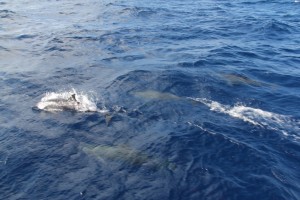
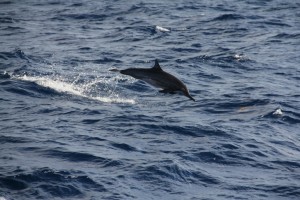
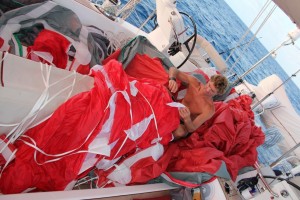
Scott repairing the Parasailor
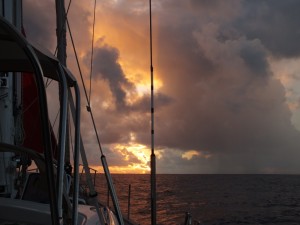
Sunsets are spectacular - but short in duration
On the morning of day 16, at about 7am, we heard the long awaited shout of “Land Ho”. It took another 2 hours to get to the finish line, at the mouth of the bay of Atuona, Hiva Oa, Marquesas. We were the 3rd boat to arrive. The second boat, 12 Moons, just 1 hour ahead of us. The bay is truely beautiful. I thought nothing could beat the San Blas, but this island is luciously green with towering peaks rising to 3,000 feet directly up from the sea……but Hiva Oa will be the next blog. For now I will have my usual end of passage treat of half a bottle of dark rum and as little coke as I can manage.
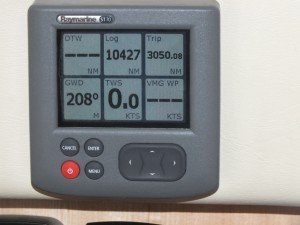
Boat trip recorder showing distance travelled was 3,050 nm
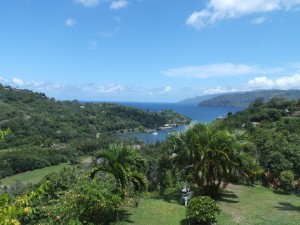
Atuona Bay, Hiva Oa
Sapphire is down there somewhere, on the right, not visible from here. My mobile is not working from here and so I think will not work anywhere in French Polynesia, with the exception of Tahiti in a months time. Wifi is good on Hiva OA but we are off to more remote spots in a few days. I’ll post again before we leave here. After that – who knows.
